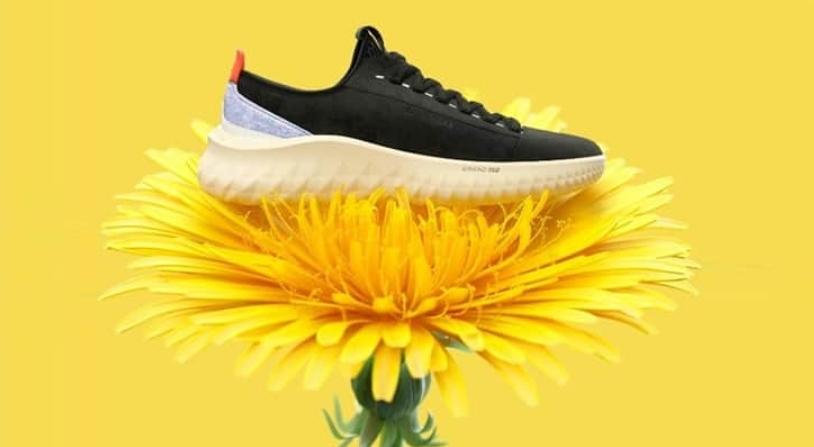In addition to brightening our meadows and spreading its egrets in the wind, the dandelion secretes latex. From “dandelion milk” to our sneaker soles, there was only one step, taken brilliantly by an American brand of shoes and accessories.
After milk fibre, mushroom or pineapple leather, dandelion rubber stands out as a new fiber to follow for more sustainable fashion…
Rubber in our fields
The name “dandelion” or “lion’s tooth” corresponds to different varieties of perennial plants of the genus Taraxacum, easily recognizable by their golden yellow flowers.
These common plant species have edible leaves and roots, but are also known for their medicinal properties.
Far from being exotic, this “weed” nevertheless shares a characteristic with Hevea brasiliensis or “rubber tree”, a tropical tree native to South America and widely cultivated in Asia.
Both produce latex, a milky white vegetable juice. This liquid, easy to harvest by bleeding or incision, coagulates as it dries to form an elastic gum: natural rubber.
Unlike rubber trees, growing dandelion does not require a hot, humid atmosphere. It is therefore found in the wild almost everywhere on the planet, including in austere climates because it is resistant to negative temperatures.
Dandelion rubber, its ecological benefits
By its very nature, dandelion rubber poses as a sustainable alternative to synthetic, petroleum-derived rubber.
Faced with growing global demand, it has many ecological arguments to compete with rubber latex. The development of rubber tree cultivation contributes to the deforestation of certain natural tropical areas.
Dandelion, this raw material available on all continents, therefore appears to be a solution for preserving biodiversity, facilitating supply to all parts of the globe… and limiting the carbon impact linked to transport.
The properties of dandelion rubber
Dandelion rubber belongs to the elastomer family: it is a polymer with elastic properties.
Its chemical and physical properties are similar to those of rubber latex:
- Elasticity
- Great mechanical resistance
- Amortization
- Waterproofing
Like any type of latex or natural rubber, dandelion rubber is difficult to recycle and has poor light resistance.
Apps
Latex is used in the medical sector (disposable gloves), in various branches of industry (belts, tires, hoses, bedding, seals, etc.), as well as to manufacture equipment and accessories for games or sports (flooring, synthetic turf, ping-pong rackets, etc.)
It allows the textile industry to produce certain stretch yarns but also lace, tulle or knitting.
Origins and innovations
The first patent for dandelion rubber was filed in 1905. During the first half of the 20th century, the Soviet Union cultivated dandelion on a large scale, with the aim of producing “local” rubber, without obtaining great results. .
The potential of dandelion latex was then shelved until the early 2000s. dandelion roots.
Recently, Cole Haan’s ZEROØGRAND II sneaker models have been equipped with the FlowerFoam™ sole, which contains 25% dandelion rubber.
There is no doubt that these flower power innovations will quickly give ideas to other creators…

